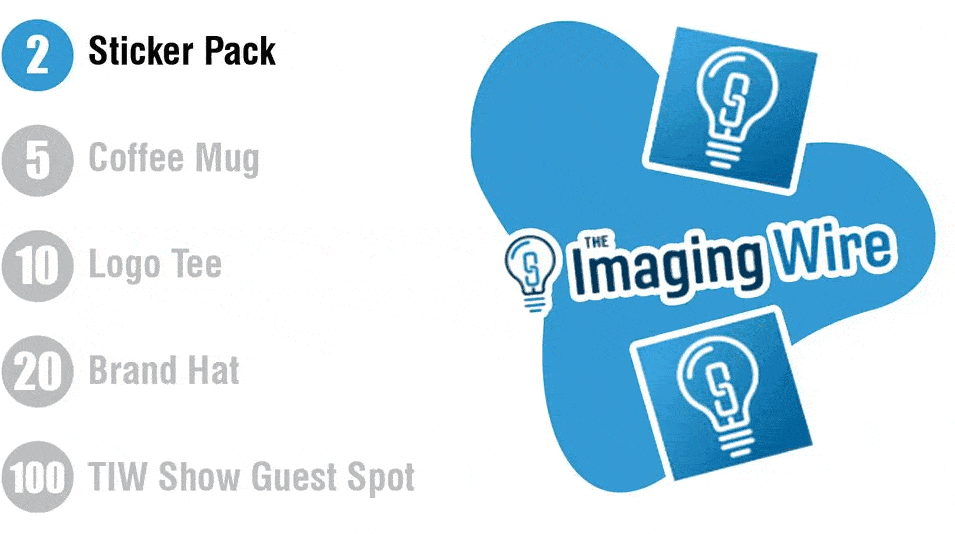|
Google’s Cloud AI Suite | PCP Dissatisfaction
October 10, 2022
|
|
|

|
|
Together with
|

|
|
|
“How it is built is important of course, but that should manifest itself in an outcome.”
|
|
Riverain Technologies’ Steve Worrell on why AI evaluators should focus more on proven results, and less on training inputs.
|
|

|
|
Google announced what might be its biggest, or at least most public, push into medical imaging AI with the launch of its new Google Cloud Medical Imaging Suite.
The Suite directly targets organizations who are developing imaging AI models and performing advanced image-based analytics, while also looking to improve Google’s positioning in the healthcare cloud race.
The Medical Imaging Suite is (logically) centered around Google Cloud’s image storage and Healthcare API, which combine with its DICOMweb-based data exchange and automated DICOM de-identification tech to create a cloud-based AI development environment. Meanwhile, its “Suite” title is earned through integrations with an array of Google and partner solutions:
- NVIDIA’s annotation tools (including its MONAI toolkit) to help automate image labeling
- Google’s BigQuery and Looker solutions to search and analyze imaging data, and create training datasets
- Google’s Vertex AI environment to accelerate AI pipeline development
- NetApp’s hybrid cloud services to support on-premise-to-cloud data management
- Google’s Anthos solution for centralized policy management and enforcement
- Change Healthcare’s cloud-native enterprise imaging PACS for clinical use
It’s possible that many of these solutions were already available to Google Cloud users, and it appears that AWS and Azure have a similar list of imaging capabilities/partners, so this announcement might prove to be more technologically significant if it leads to Google Cloud creating a differentiated and/or seamlessly-integrated suite going forward.
However, the announcement’s marketing impact was immediate, as press articles and social media conversations largely celebrated Google Cloud’s new role in solving imaging’s interoperability and AI development problems. It’s been a while since we’ve seen AWS or Azure gain imaging headlines or public praise like that, and they’re the healthcare cloud market share leaders.
The Takeaway
Although some might debate whether the Medical Imaging Suite’s features are all that new, last week’s launch certainly reaffirms Google Cloud’s commitment to medical imaging (with an AI development angle), and suggests that we might see more imaging-targeted efforts from them going forward.
|




|
|
St. Michael’s Case for Hyperfine
There’s a lot to learn from St. Michael’s Hospital’s experience implementing the Hyperfine Swoop portable MRI at the point-of-care. See what their hospital leaders had to say about how the ultra-low-field MRI technology impacted their patients and clinicians in this on-demand webinar.
|
|
- PCPs’ Screening Dissatisfaction: A JAMA study revealed that primary care physicians (n = 273 from 3 health systems) are largely dissatisfied with the way abnormal cancer screening results are managed, proposing the creation of a new organ-agnostic and primary care-focused system. Few PCPs were satisfied with their current processes for abnormal screening follow-ups (21.8% w/ cervical, 22.4% w/ lung, 46.9% w/ breast), citing a lack of EHR tools and standard processes (automated reports, reminder letters, team outreach) as key barriers.
- Rock Health’s Q3 Slowdown: Rock Health confirmed that Q3 2022 brought a significant slowdown in digital health venture funding, falling 48% to $2.2B (the lowest since Q4 2019), driven by a drastic decline in late-stage rounds. Imaging played a major role in the quarterly report, as cardiac CT AI company Cleerly scored the largest funding round ($223M), and two of the six most-funded clinical indications involve imaging (oncology #2, cardiovascular #3). If you’re interested in this story, check out our full writeup in Digital Health Wire.
- TeraRecon Neuro AI: TeraRecon launched its new TR Neuro AI-assisted clinical workflow solution, which analyzes non-contrast CTs and CTAs to automatically detect ICH and LVO, and produces CT perfusion maps to help clinicians assess brain function. TeraRecon highlighted the solution’s role in “care activation” and integration across the healthcare organization (via TeraRecon’s Intuition platform and mobile app), which is logical positioning given the success of other care coordination-focused neuro AI tools.
- Liver Metastases Variability: A new Mayo Clinic study showed that liver metastasis detection’s substantial interreader variability is largely due to radiologist experience and differences in interpretation approaches. The researchers had 25 radiologists (9 abdominal subspecialists, 5 staff rads, 11 trainees) examine 40 contrast-enhanced abdominal CTs (32 w/ 91 liver metastases), finding that the abdominal radiologists were more accurate (JAFROCs: 0.77, 0.69, 0.71), while sensitivity was associated with longer interpretation times (P = .003) and greater use of liver display windows and coronal images (P < .001).
- FDA’s Radiology-Centric AI Update: The FDA updated its list of cleared AI/ML-enabled medical devices, adding 178 devices that were cleared in the last year (total now 521), while highlighting radiology’s continued AI dominance (84% of new devices, 75% of total). The major OEMs continue to have the most FDA-cleared AI products (GE w/ 42, Siemens w/ 29, Canon w/ 16, Philips w/ 10), while Aidoc has the most clearances among AI vendors (13).
- SPECT-Based Parkinson’s Breakthrough: Washington University in St. Louis researchers developed a new SPECT imaging method that could improve Parkinson’s disease severity assessments, particularly later in the disease’s progression. The new method allows researchers to measure dopamine transporter uptake in three regions of the brain associated with Parkinson’s disease (caudate, putamen and globus pallidus).
- Annalise CXR Efficiency: A study presented at the BIR Annual Congress highlighted Annalise.ai’s CXR solution’s ability to improve radiologist efficiency. Four radiologists each completed 50 chest X-ray reports, including 25 triaged by Annalise Enterprise CXR for the presence of 124 abnormalities. Annalise Enterprise CXR significantly reduced the rads’ average reporting time (75.5 to 66.8 seconds) and report turnaround time for CXRs that it flagged for abnormalities (1,450 to 889 seconds), while AI and rads had discrepancies in 6.5% of cases (13/200 studies).
- Genetesis’ Magnetocardiography Funding: Medical imaging startup Genetesis recently closed a $17.5M Series C round, bringing its total funding to over $40M. The funds will go toward clinical trials for the company’s CardioFlux magnetocardiography system, which measures the heart’s magnetic fields to quickly detect ischemic heart disease. The CardioFlux already has Breakthrough Device Designation and is expected to gain FDA approval by early next year.
- August Hospital Margins: Hospitals appear likely to end the year in the red despite margin improvements in August, according to Kauffman Hall’s latest National Hospital Flash Report. Margins improved by a median of 4.2 percentage points over July due to higher outpatient volume and an increase in elective procedures, but the report calls out new market entrants like urgent care centers and standalone surgery centers as “chipping away” at hospital revenues.
- Clarius & Trice’s Arthroscopy Platform: Clarius Mobile Health and Trice Medical unveiled their new orthopedic diagnosis and treatment platform, combining Clarius’ handheld ultrasound with Trice’s single-use handheld arthroscope to provide two distinct views on the same integrated tablet. Clarius appears to be taking a partner-led approach to expand across ‘ologies,’ noting its recent alliances with hemodynamic ultrasound company ImaCor and virtual gynecology clinic startup Turtle Health.
- Interventional X-Ray & Mobile C-Arm Rebound: Signify Research reported strong 2021 rebounds in the interventional X-ray (+10.2%) and mobile C-arm (+15.5%) markets following COVID-related declines in 2020. The firm expects that the two interventional segments will see continued (but slower) growth through 2026, with interventional X-ray demand driven by structural heart and neurology procedures, and mobile C-arm growth driven by the aging population and increasing awareness of the benefits of minimally invasive procedures.
|
|
Enlitic’s AI Advancements
Enlitic was featured on Bloomberg’s Advancements with Ted Danson, detailing imaging’s growing data standardization problem, and how the Curie platform addresses this problem.
|
|
- Check out this patient case study showing how the Arterys Chest I MSK AI solution helped emergency physicians spot two rib fractures in a shoulder pain exam that might have gone unnoticed.
- Working out your AI business case? Check out this helpful Blackford Analysis post detailing how to create your AI Value Matrix based on your organizational objectives and value indicators.
- Check out our interview with United Imaging CEO, Jeffrey Bundy, who explores company culture’s central role in medical imaging and how to build, improve, and maintain culture. If you’re ready to improve your organization’s culture, this interview is a great way to start.
|
|
|
Share The Imaging Wire
|
|
Spread the news & help us grow ⚡
|
|
Refer colleagues with your unique link and earn rewards.
|

|
|
|
|
Or copy and share your custom referral link: *|SHAREURL|*
|
|
You currently have *|REFERRALS|* referrals.
|
|
|
|
|